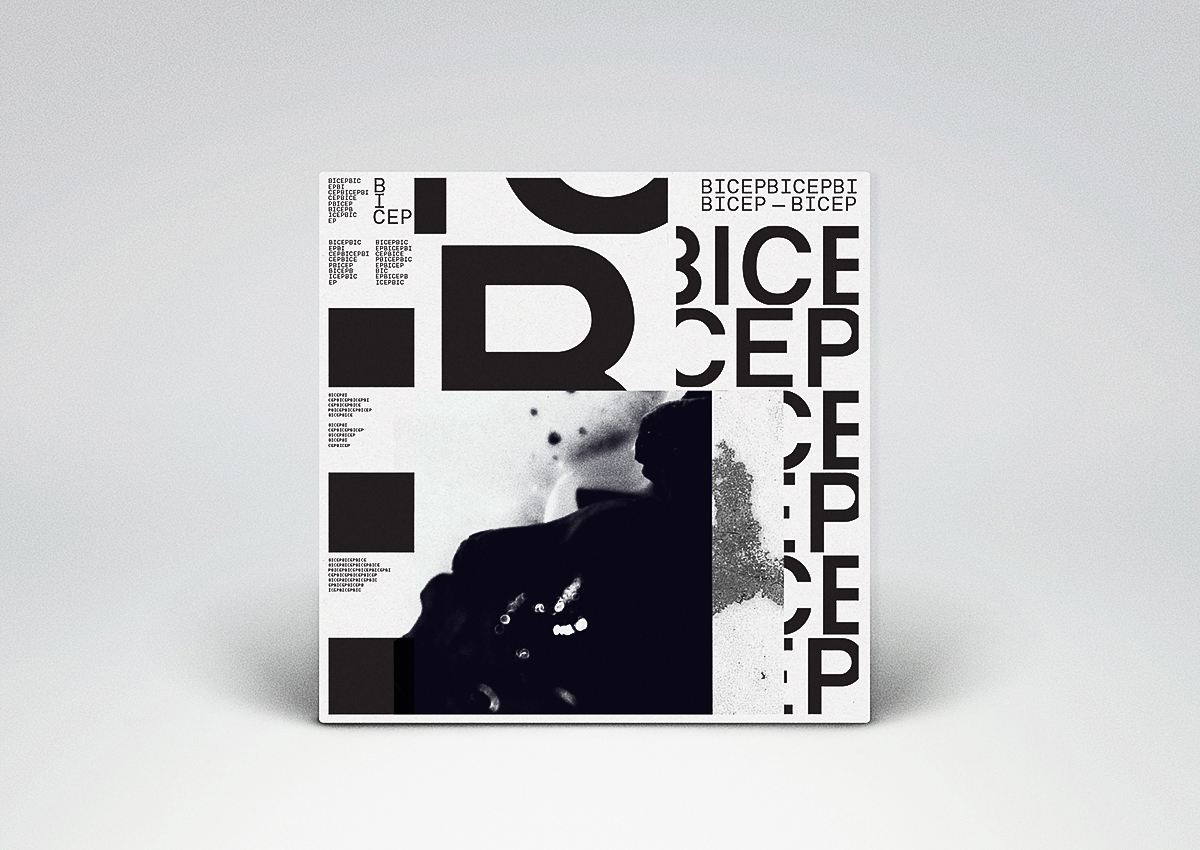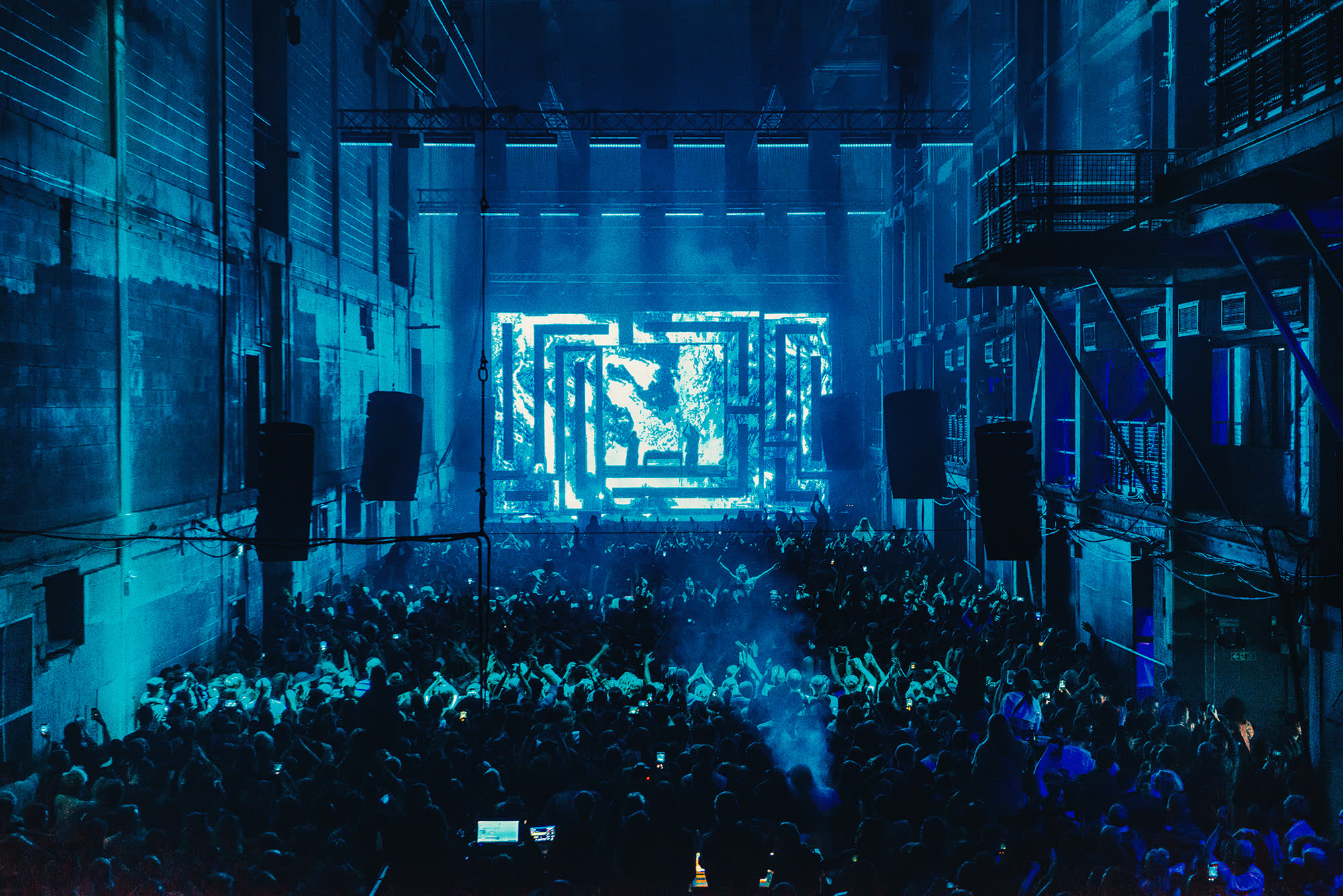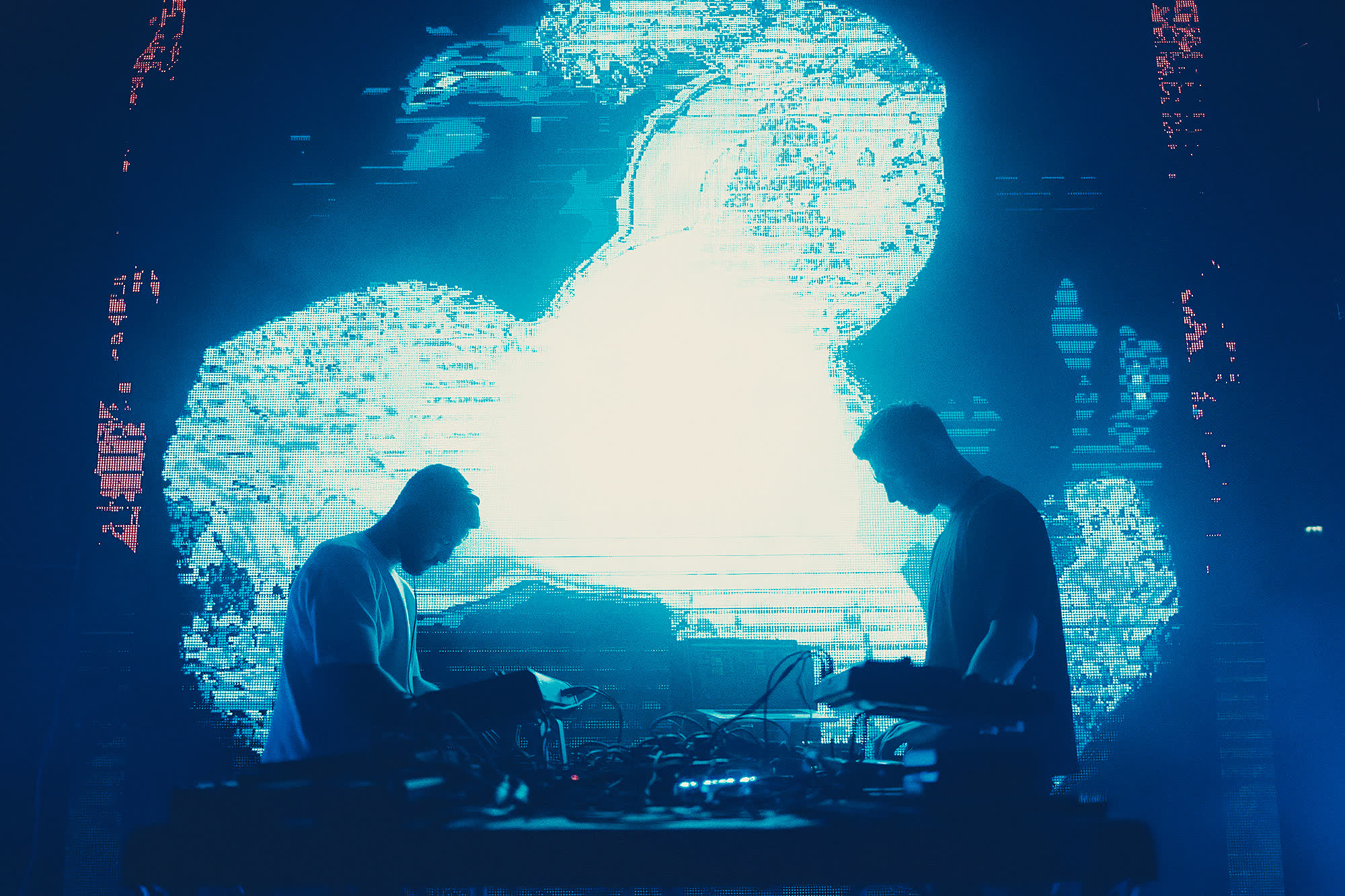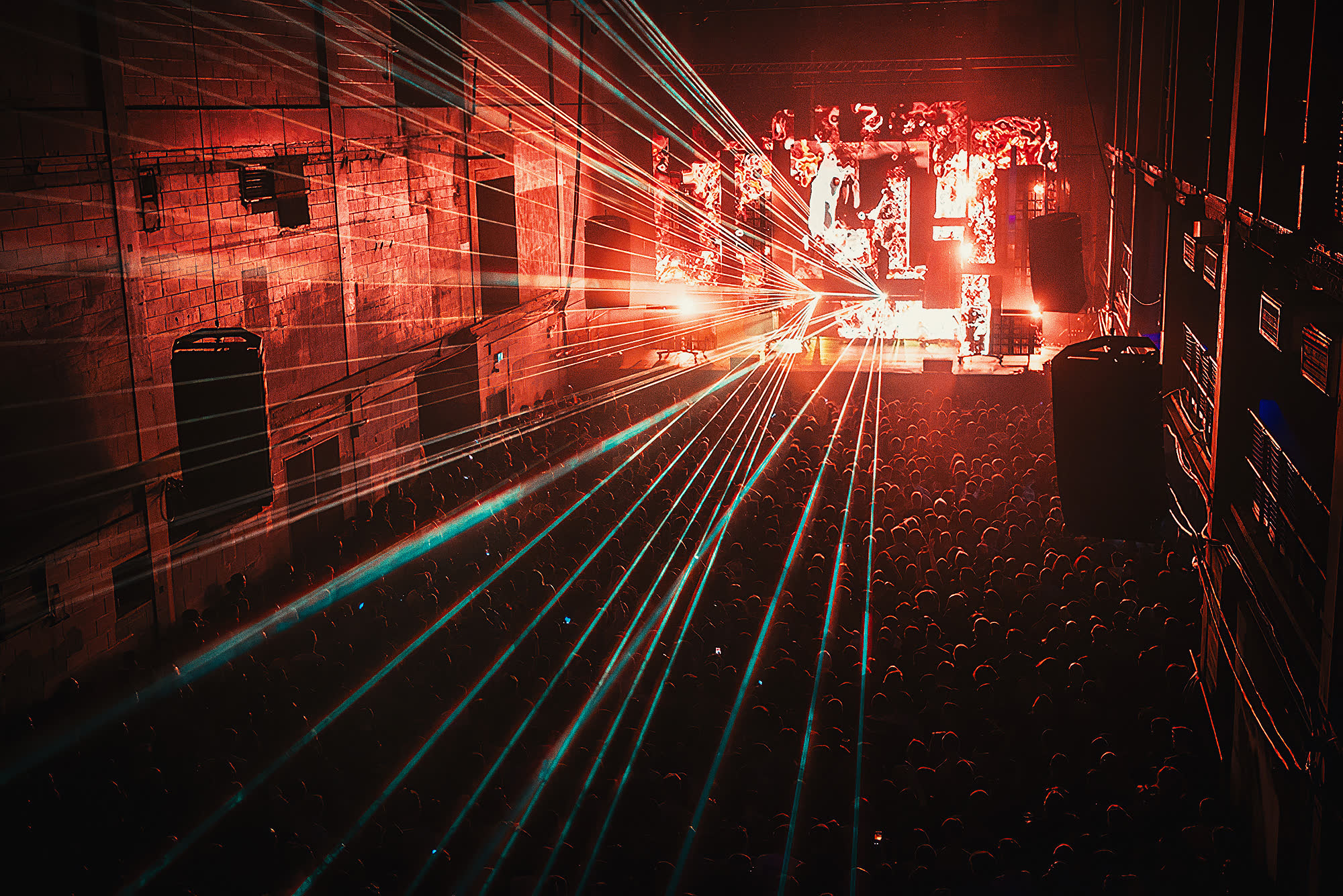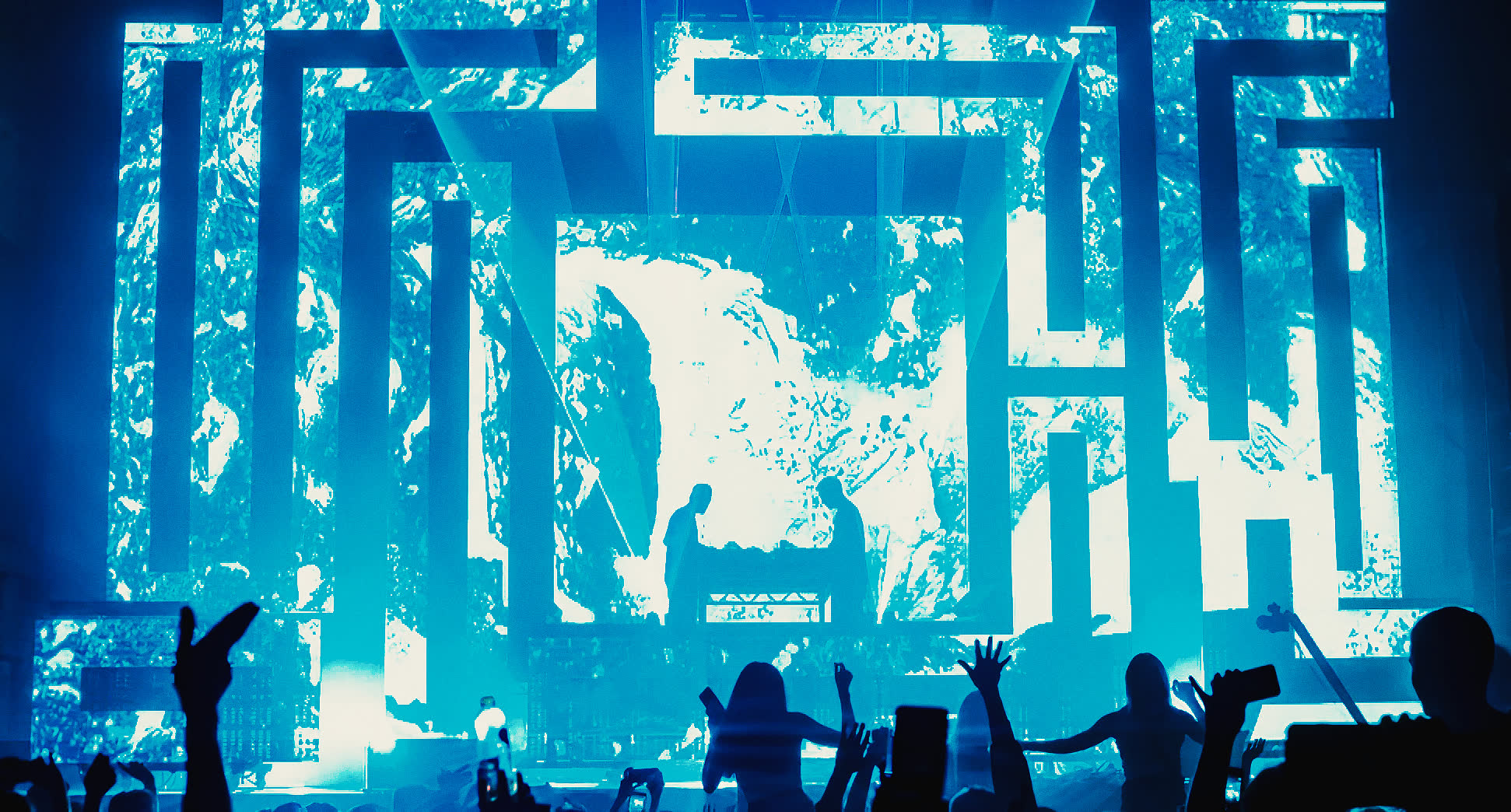One can find the pulse in the rhythm; the deep bass in the chest; experience audio waves as synapses spark the neurons and suddenly find emotions; but how does one translate music to a visual output without being finite or tremendously precise? In the design process, we have set our goal of communicating via ambiguity. Free from the individual and in tune with the audio: the collective brain is as ambiguous and as emotional as it might be as a visual system.
Client: Bicep
Label: Ninja Tune
Collaborators: Ana Types Type, Lyft Creative Studio, Xesta Studio
Photos: Antonio Pagano, Off The Record
Live Visuals, in collaboration with: Zak Norman
On a quest to find multiple interpretations we've started a collaborative design vortex, invited Lyft, Ana Types Type and Xesta Studio to step right in and to generate analogue graphics as systematic abstractions that would allow innumerous digital compositions to frame either specific rhythms — the singles — micro/macro spaces — the album, and live footage — the motion campaign.
How does one design feelings? By allowing silence to make music (the AURA label is plain black) and loudness to convey silence (the screen printed side of AURA's doesn't allow the vinyl to play music). We've framed the narrative in the rhythm, in the microscope and the telescope and on disruptive compositions as a continuity of the process of creating electronic music that breaks and grows.
As such, we've designed each moment as part of a system that has the flexibility to fuel content for printed objects as well as motion visuals for 4 singles and 1 debut album.

Objects of memory, the music is materially composed by 1 constant fluorescent acid yellow, a neutral typographical approach, and a plural series of printed outer and inner sleeves as well as screenprints over vinyls, inner and outer
Client: Bicep
Label: Ninja Tune
Collaborators: Ana Types Type, Lyft Creative Studio, Xesta Studio
Photos: Antonio Pagano, Off The Record
Live Visuals, in collaboration with: Zak Norman
Label: Ninja Tune
Collaborators: Ana Types Type, Lyft Creative Studio, Xesta Studio
Photos: Antonio Pagano, Off The Record
Live Visuals, in collaboration with: Zak Norman
On a quest to find multiple interpretations we've started a collaborative design vortex, invited Lyft, Ana Types Type and Xesta Studio to step right in and to generate analogue graphics as systematic abstractions that would allow innumerous digital compositions to frame either specific rhythms — the singles — micro/macro spaces — the album, and live footage — the motion campaign.
How does one design feelings? By allowing silence to make music (the AURA label is plain black) and loudness to convey silence (the screen printed side of AURA's doesn't allow the vinyl to play music). We've framed the narrative in the rhythm, in the microscope and the telescope and on disruptive compositions as a continuity of the process of creating electronic music that breaks and grows.
As such, we've designed each moment as part of a system that has the flexibility to fuel content for printed objects as well as motion visuals for 4 singles and 1 debut album.
How does one design feelings? By allowing silence to make music (the AURA label is plain black) and loudness to convey silence (the screen printed side of AURA's doesn't allow the vinyl to play music). We've framed the narrative in the rhythm, in the microscope and the telescope and on disruptive compositions as a continuity of the process of creating electronic music that breaks and grows.
As such, we've designed each moment as part of a system that has the flexibility to fuel content for printed objects as well as motion visuals for 4 singles and 1 debut album.



